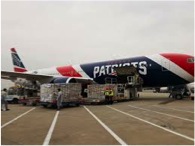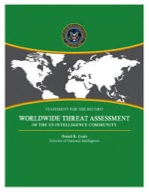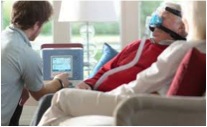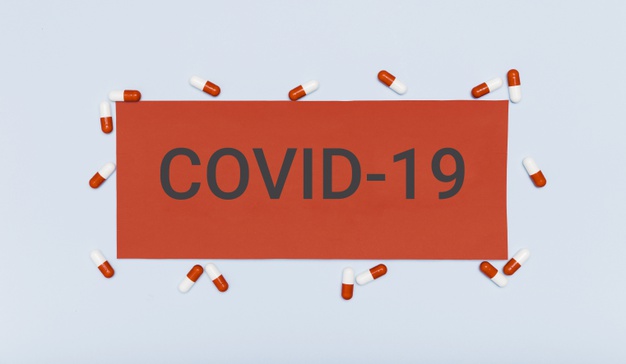
Efficiency and quality are the hallmarks of Lean Six Sigma. But the Coronavirus, and our ability to prepare and even respond effectively to its devastating consequences, has exposed what can happen when there has been a singular focus on efficiency. The question we need to ask is this: Have we gone too far in one direction and not far enough in another?
Consider that Lean processes emphasize the minimization of delays, errors and waste. As a result, under pressure to emphasize efficiency and cut unnecessary waste, hospitals, in the past, have taken steps to limit inventory by maintaining stock levels to what would be needed in the short run, no more and no less. They have stocked no extra swabs, masks and gowns. Indeed, stockpiling or maintaining buffer stocks was discouraged, often considered unnecessary, or even wasteful.
Even the number of ventilators were limited to no more than what would be needed in normal times. And this focus on efficiency extended to human resources. The number of nurses and physicians was kept to just the right number, no more and no less. As one administrator said, “we were rewarded for trimming fat, so we trimmed fat.”
But the consequence of managing a Lean organization is that there is little cushion, no extra masks, swabs or gowns or even extra healthcare professionals. So, when the Coronavirus placed heavy demands on the system, healthcare professionals had no choice but to reuse single-use masks or to wear garbage bags to protect them from respiratory droplets.
 Shortages were so severe, and risks to healthcare workers so high, that heroic efforts were needed to locate supplies. The owners of the New England Patriots sent the team’s customized Boeing 767 to Shenzhen, China to load over one million masks and fly them back to Boston. It was a plan that required cooperation from many levels in the United States and China. Permission was finally granted under the condition that the crew remain on board the aircraft when it landed in China and that the plane remain on the ground no more than 3 hours. The obstacles were overcome, and the plane departed. Once landed, the aircraft was loaded and cleared for takeoff in 2 hours and 57 minutes.
Shortages were so severe, and risks to healthcare workers so high, that heroic efforts were needed to locate supplies. The owners of the New England Patriots sent the team’s customized Boeing 767 to Shenzhen, China to load over one million masks and fly them back to Boston. It was a plan that required cooperation from many levels in the United States and China. Permission was finally granted under the condition that the crew remain on board the aircraft when it landed in China and that the plane remain on the ground no more than 3 hours. The obstacles were overcome, and the plane departed. Once landed, the aircraft was loaded and cleared for takeoff in 2 hours and 57 minutes.
Why were these shortages so severe? Why were healthcare organizations so ill prepared? Here is a quote from the Worldwide Threat Assessment Report issued by Daniel Coates, Director of National Intelligence, and submitted to the Senate Select Committee on Intelligence. The date on that report was January 29, 2019.,
 We assess that the United States and the world will remain vulnerable to the next flu pandemic or largescale outbreak of a contagious disease that could lead to massive rates of death and disability, severely affect the world economy, strain international resources, and increase calls on the United States for support.
We assess that the United States and the world will remain vulnerable to the next flu pandemic or largescale outbreak of a contagious disease that could lead to massive rates of death and disability, severely affect the world economy, strain international resources, and increase calls on the United States for support.
Apparently, the warning went unheeded because less than one year after this report was submitted to Congress, the coronavirus spread from Wuhan, China to the United States. From the beginning of that outbreak, hospitals and public healthcare professionals warned that they were unprepared for the devastation the pandemic could wreck and the shortages that would prevent proper treatment for those who fell ill.
As we all know, cases increased at an exponential rate, and deaths mounted. One estimate was that as many as 200,000 people would die in the United States. And just one month after the first outbreak, the number of cases soared in the United States with over 25,000 cases diagnosed in New York and 200,000 across the entire country. It was already late to stem the onslaught of the disease.
Toward the end of March, all attention turned to how the pandemic could be contained and mitigated. In addition to social distancing, and the closures of non-essential businesses and events, one very critical step was to test patients. But the healthcare system was unprepared. It needed more test kits, more swabs, more reagents, more masks, and more gowns. And without test data, it would make containment and mitigation very difficult.
 To test patients, processes needed to be set into place. Not just any process, but efficient processes; processes that minimized delays, errors and waste. Following the lead from South Korea, drive-through sites were established, many in parking lots adjacent to hospitals. It was a strategy to protect both patients and healthcare workers and get the job done efficiently. Then, processes were designed to speed test results. Originally, it took days to receive results, but with improvements in testing technology, the delay was reduced to minutes.
To test patients, processes needed to be set into place. Not just any process, but efficient processes; processes that minimized delays, errors and waste. Following the lead from South Korea, drive-through sites were established, many in parking lots adjacent to hospitals. It was a strategy to protect both patients and healthcare workers and get the job done efficiently. Then, processes were designed to speed test results. Originally, it took days to receive results, but with improvements in testing technology, the delay was reduced to minutes.
 It also became apparent that hospitals were at risk of running out of ventilators. With about 60,000 ventilators across the country – not including 100,000 older versions - the projected need was over 500,000 units, some estimates as high as 960,000. What followed was a significant effort to encourage manufacturers, such as the Ford Motor Company, to meet this shortfall by developing manufacturing processes capable of delivering ventilators as quickly as possible.
It also became apparent that hospitals were at risk of running out of ventilators. With about 60,000 ventilators across the country – not including 100,000 older versions - the projected need was over 500,000 units, some estimates as high as 960,000. What followed was a significant effort to encourage manufacturers, such as the Ford Motor Company, to meet this shortfall by developing manufacturing processes capable of delivering ventilators as quickly as possible.
Even the discovery of a therapeutic drug or the development of a vaccine was under intense time- pressure. They needed to be made available as soon as possible. And the scientific community responded. Barriers were broken as scientists from all over the world shared data and research directed toward a single goal. What normally would take years to develop, test and move through trials was expected to take one-and-a-half years or less.
While the late response contributed to untold hardship, and most importantly to the thousands of lives that had been lost, there are lessons here that must inform future efforts as we must prepare for the likelihood of future pandemics expressed in the World Threat and Assessment report.
At the Hospital level, two critical processes must be evaluated. First, the supplies that support diagnosis and support must be adequate to meet emergencies. Where appropriate adequate safety or buffer stocks of equipment must be maintained.
Second, the processes that support the diagnosis and care for patients must also be reviewed. Are there steps that can be taken to prepare for the rare but devasting events that can overwhelm our healthcare facilities? How do we accommodate an unprecedented increase in patients? How can this be done efficiently?
Third, at the Federal and State level, we need guidance from such agencies as the Centers for Disease Control and the National Institute of Health to develop strategic plans that balance short term needs - that demand one type of efficiency - with long-term needs - that demand very different types of efficiency. This guidance can help to better understand the risks and costs that need to be taken into consideration. Further, this guidance can help to develop strategies for acquiring, mobilizing and sharing resources during such emergencies.

